Abstract
Gibberellic acid was found to cause elongation in Avena sativa (oat) stem segments whether it was applied continuously or as a short pulse. The shorter the pulse time became, the higher was the gibberellic acid concentration needed to cause elongation; the segmental growth apparently depends upon the amount of gibberellic acid taken up by the segments. Avena segments showed a decreased growth response to gibberellic acid if the treatments were initiated at increasingly later times after excision from the plant. This decreased responsiveness to gibberellic acid was inhibited by low temperature (0-4 C), but accelerated by anaerobiosis. On the other hand, growth stimulation by a gibberellic acid pulse at the start of incubation was not altered by cold treatment but was nullified by a nitrogen atmosphere. Both the readiness of the segments for growth stimulation by gibberellic acid and its action in promoting growth clearly involve temperature-dependent, aerobic metabolism.
Segments were able to use glucose, fructose, sucrose, and glycerol but not malate, citrate, pyruvate, glycine, or glutamine as substrate for growth. Since final elongation without exogenous substrate was highly correlated with initial content of total carbohydrate and reducing sugar, carbohydrates seem to be the major endogenous growth substrates.
The Avena segments are composed of three distinct morphological units: node, internode, and encircling leaf sheath. Although the node and leaf sheath do not grow, they must be present for maximal growth of the internode. Quantitative assessment of the roles of each part suggests that a substance other than gibberellin or sugar is necessary for maximal internodal growth and that this substance may be channeled from the leaf sheath to the internode through the anastomosing vascular tissue of the node.
Full text
PDF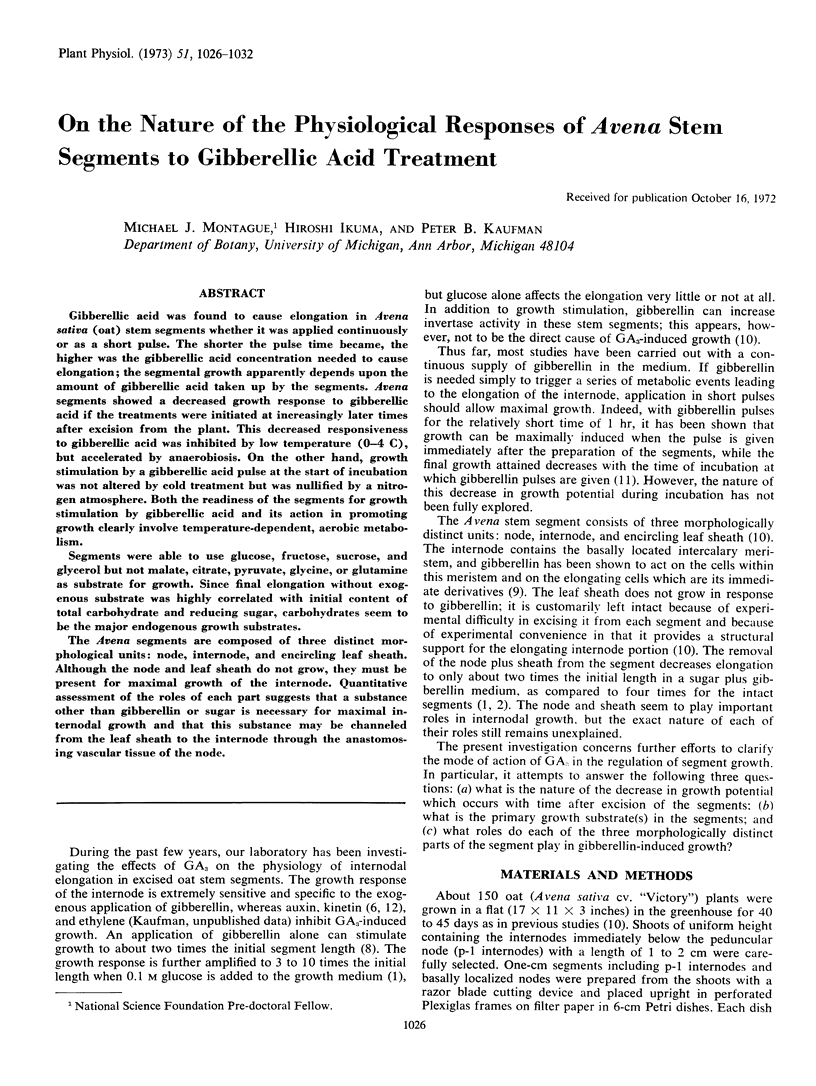
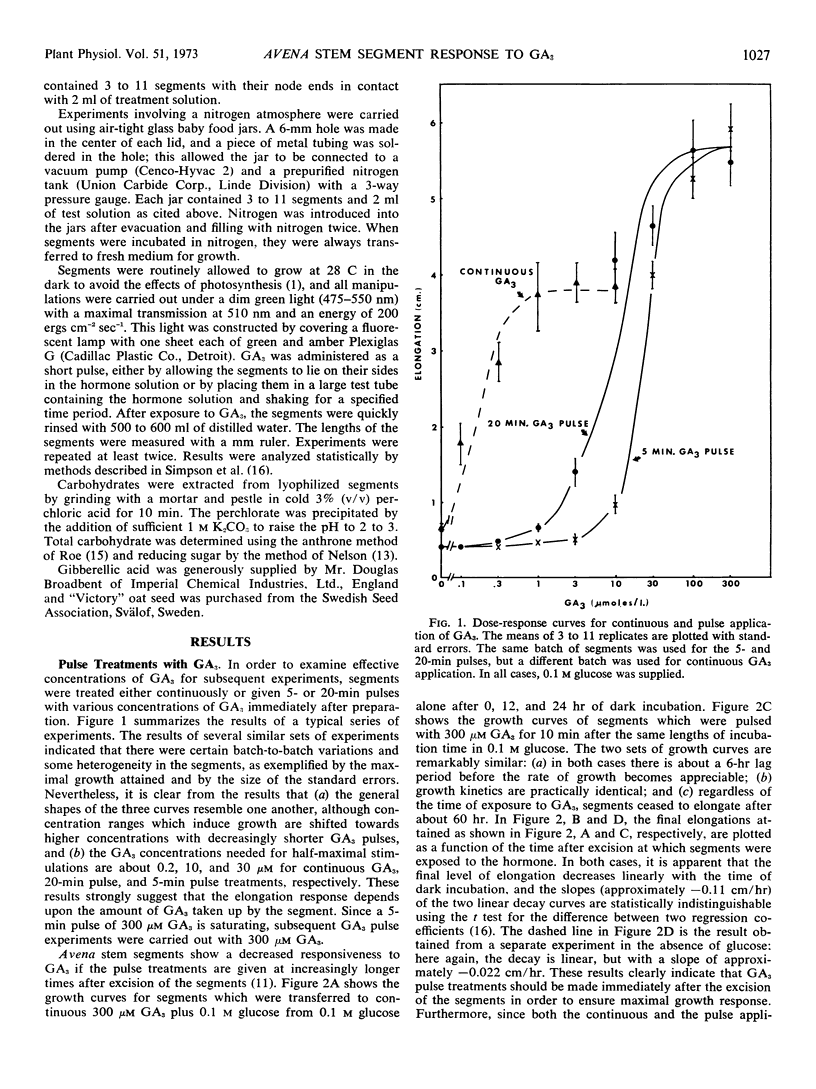
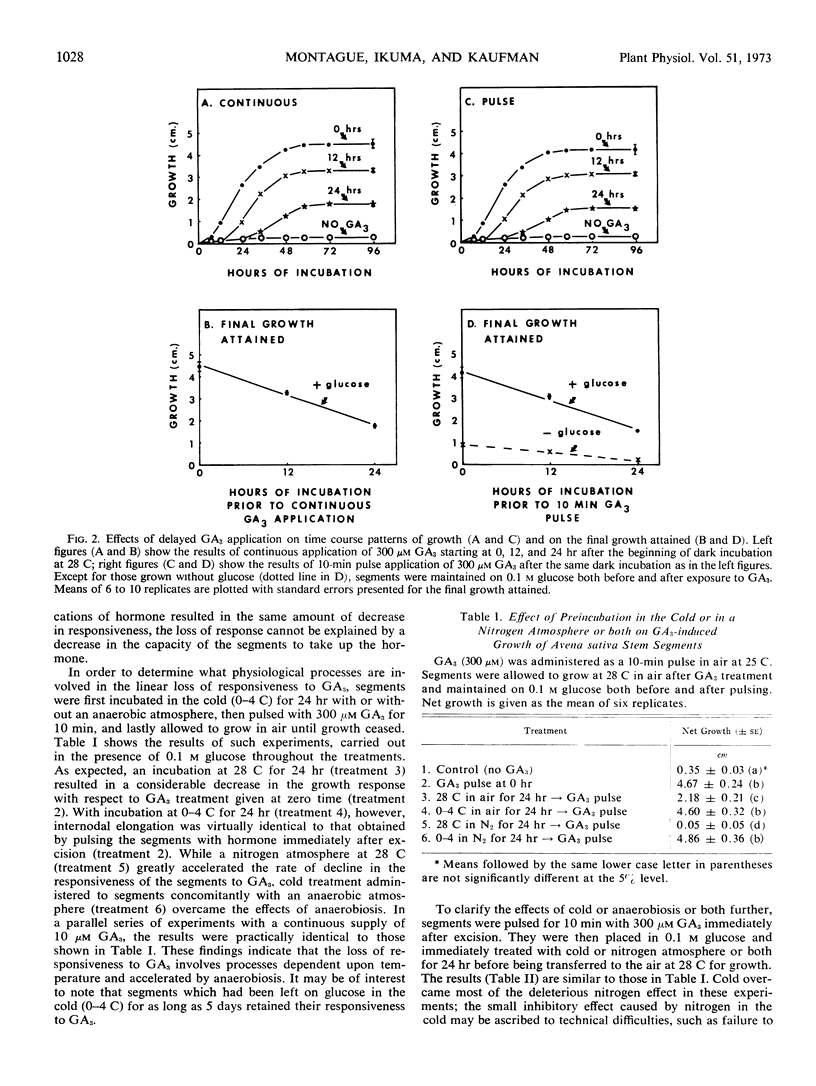
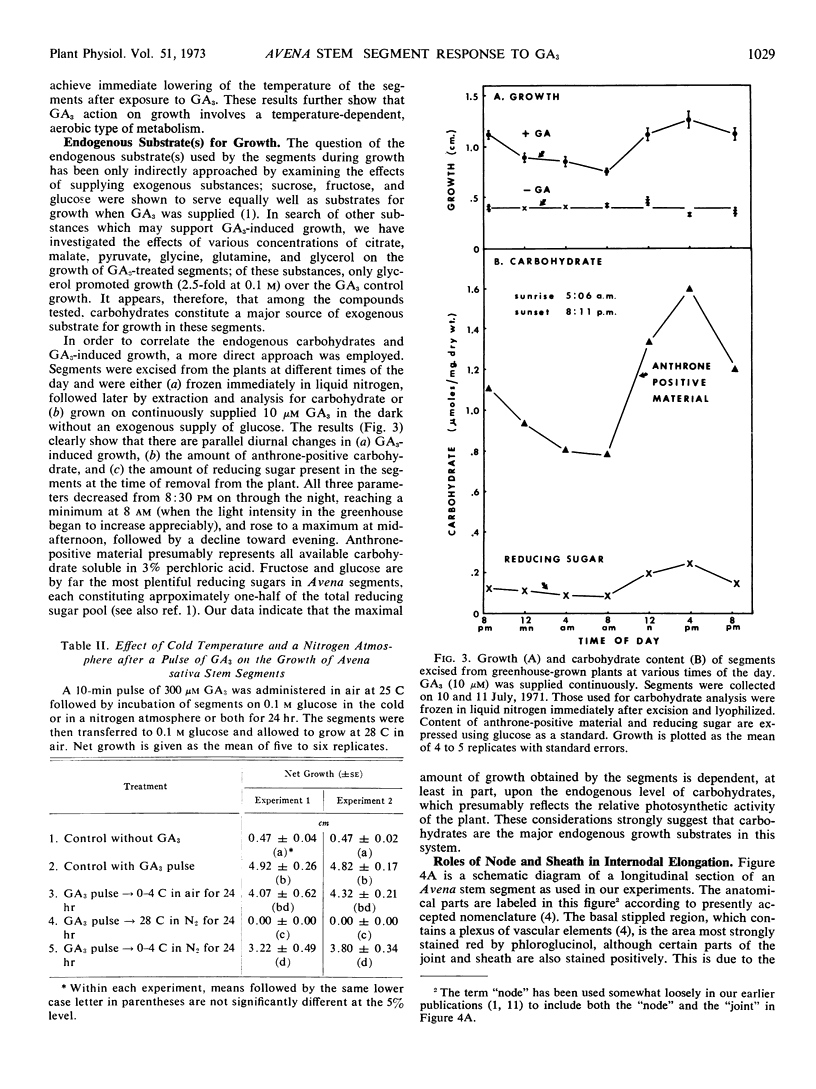
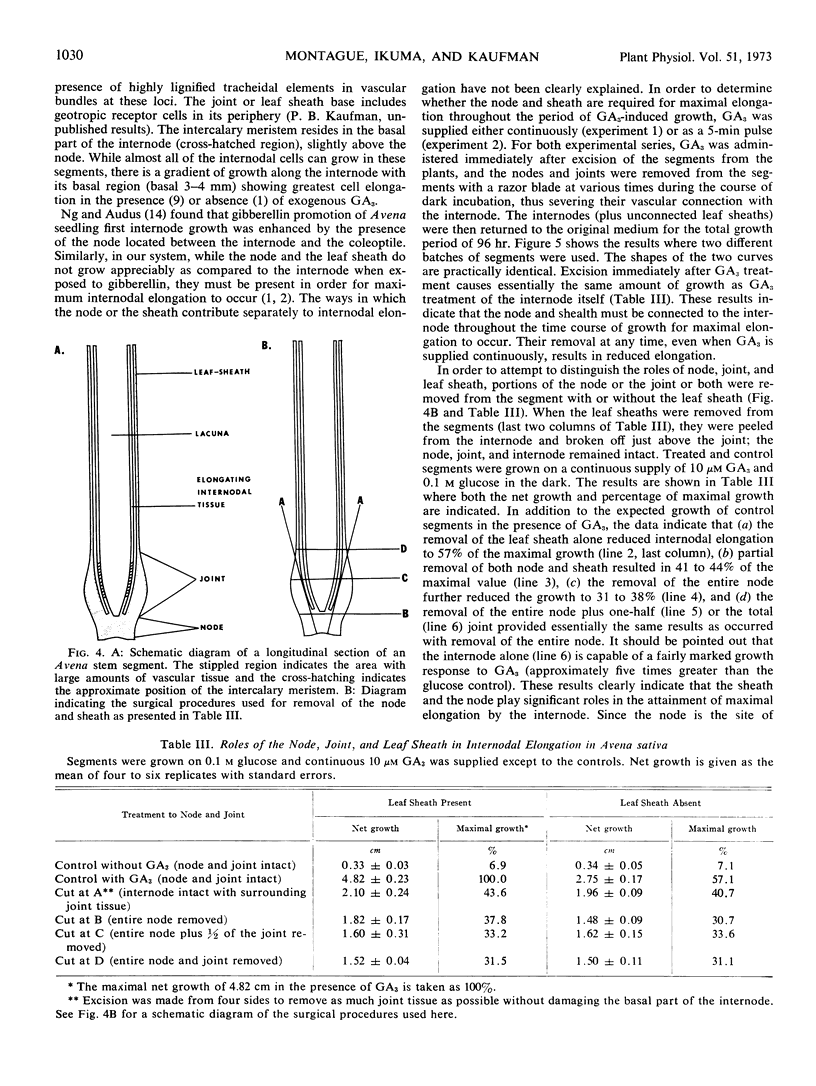
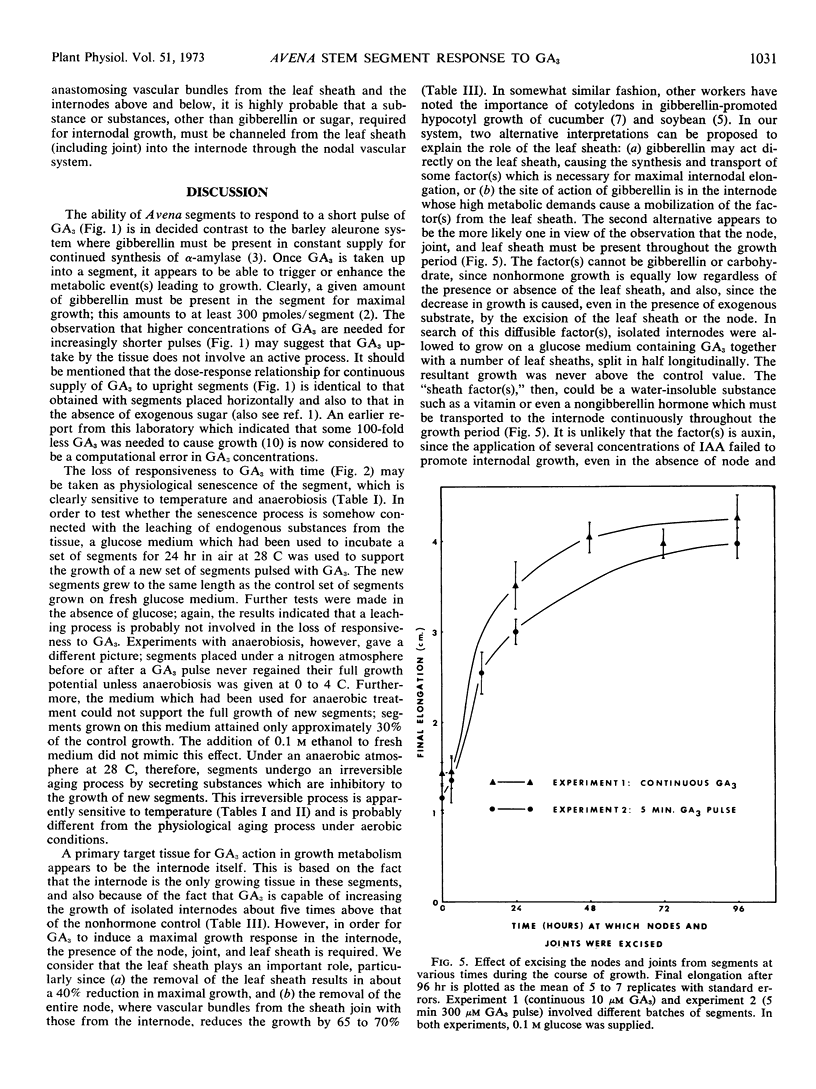
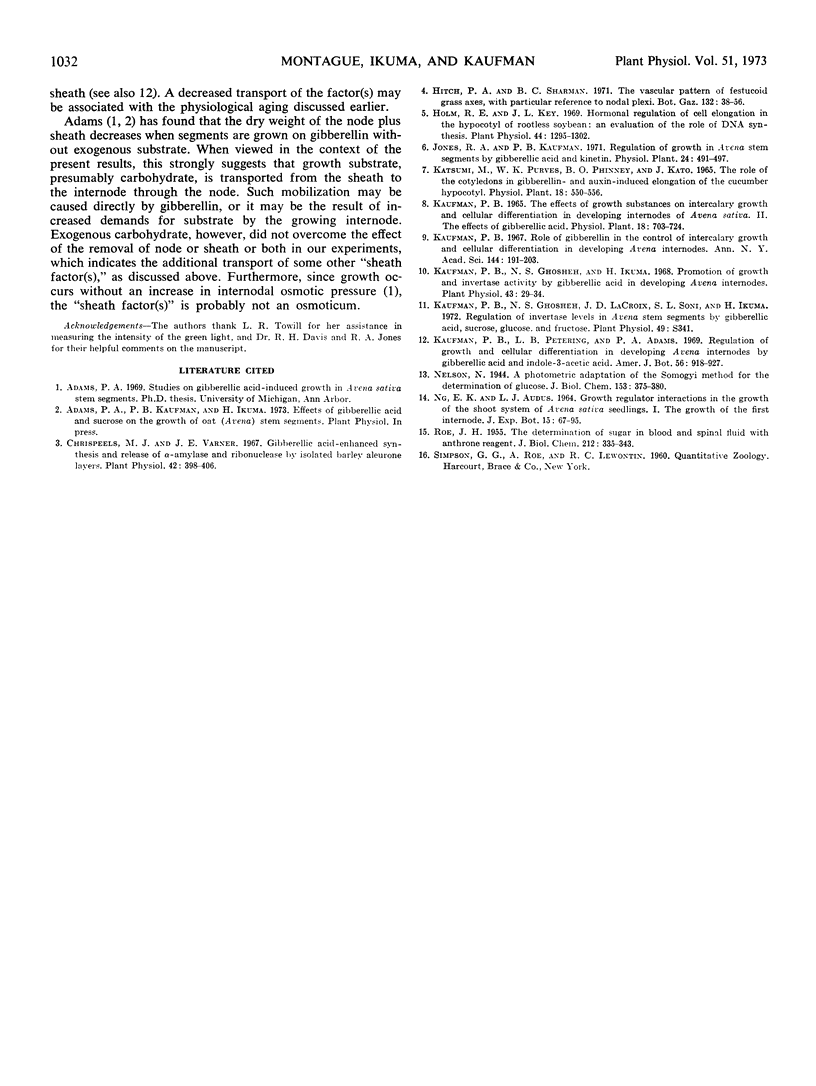
Selected References
These references are in PubMed. This may not be the complete list of references from this article.
- Chrispeels M. J., Varner J. E. Gibberellic Acid-enhanced synthesis and release of alpha-amylase and ribonuclease by isolated barley and aleurone layers. Plant Physiol. 1967 Mar;42(3):398–406. doi: 10.1104/pp.42.3.398. [DOI] [PMC free article] [PubMed] [Google Scholar]
- Holm R. E., Key J. L. Hormonal regulation of cell elongation in the hypocotyl of rootless soybean: an evaluation of the role of DNA synthesis. Plant Physiol. 1969 Sep;44(9):1295–1302. doi: 10.1104/pp.44.9.1295. [DOI] [PMC free article] [PubMed] [Google Scholar]
- Kaufman P. B., Ghosheh N., Ikuma H. Promotion of growth and invertase activity by gibberellic Acid in developing Avena internodes. Plant Physiol. 1968 Jan;43(1):29–34. doi: 10.1104/pp.43.1.29. [DOI] [PMC free article] [PubMed] [Google Scholar]
- ROE J. H. The determination of sugar in blood and spinal fluid with anthrone reagent. J Biol Chem. 1955 Jan;212(1):335–343. [PubMed] [Google Scholar]


